i am a hoarder where do i start

i am a hoarder where do i start: Essential Steps to Declutter Your Life
Struggling with clutter and wondering, ‘I am a hoarder where do I start’? Start here. This guide will help you take your first steps, create a plan, and find support. Let’s make decluttering manageable.
Key Takeaways
Acknowledge hoarding behavior as the first step to decluttering, recognizing it as a problem often rooted in emotional issues.
Start small by decluttering one room at a time, using the 3-box sorting system (Keep, Donate or Sell, Trash) to simplify the process.
Involve family and friends for emotional support, and consider professional assistance if the task feels overwhelming to ensure effective decluttering.
Acknowledge the Problem
Recognizing where you are is the first step. If you are a hoarder, understanding and admitting this is crucial. Hoarding often stems from emotional distress or compulsive shopping habits. Recognizing these triggers is the first stride towards addressing the clutter in your life. It’s not just about the physical items but understanding the underlying causes that lead to the accumulation of so much stuff.
Self-awareness is a powerful tool. Admitting your hoarding behavior cultivates a sense of self-awareness necessary for personal growth. It’s about taking a hard look at your living conditions and admitting that the mountain of junk isn’t just a collection of items but a sign of a deeper issue. You may have bought things impulsively or because of emotional triggers, and reflecting on what you have bought can help you understand your clutter. When you looked at your possessions or situation objectively, this new perspective can be truly eye-opening.
Talking openly with trusted friends or family can be incredibly freeing. They provide emotional support and assist in facing the challenges of decluttering. It's okay to admit you made a mistake in keeping or acquiring certain items, and learning from these mistakes is part of the process. Remember, acknowledging the problem isn’t a sign of weakness but a brave step towards taking control of your life. Talk about your feelings and experiences to help ease the process.
Start Small: One Room at a Time
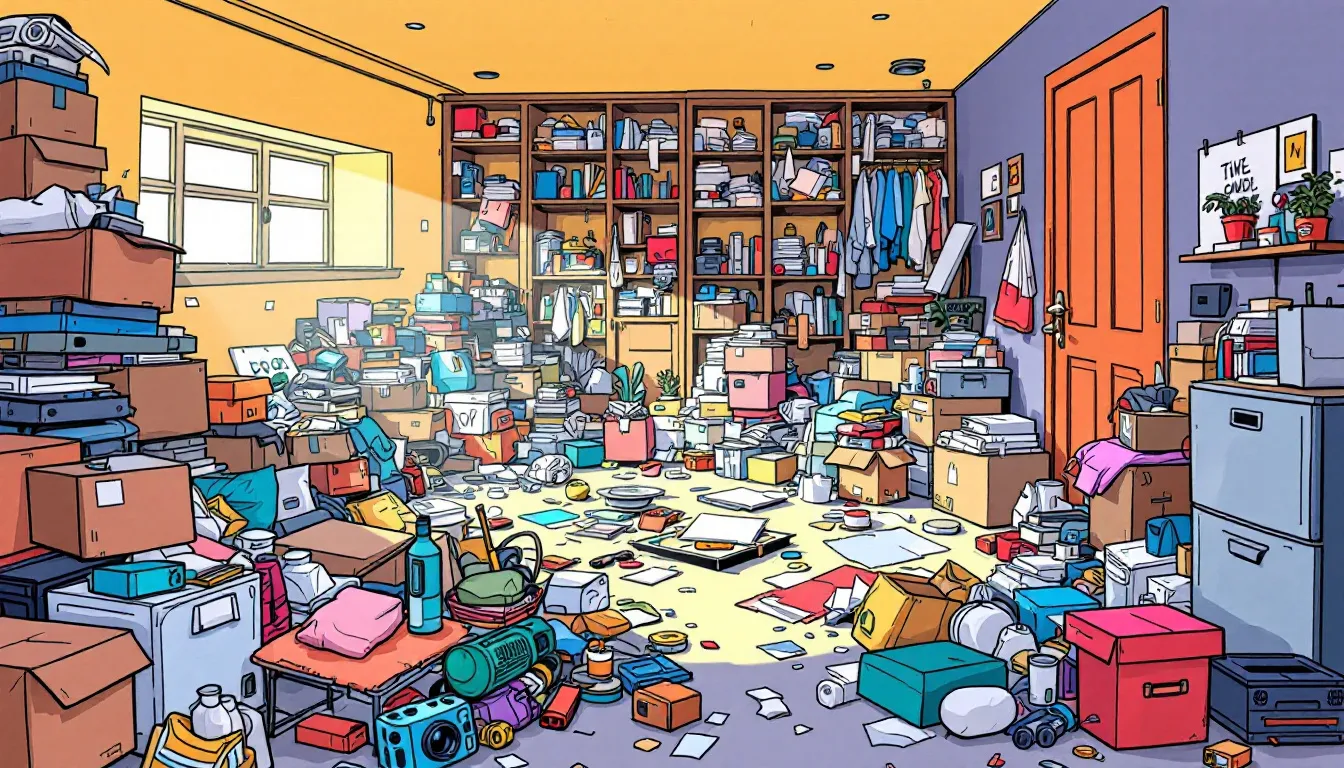
After acknowledging the problem, take action. Decluttering your entire house can be overwhelming, so start small:
Choose one room to begin with, preferably the easiest one. Start decluttering from the ceiling down to the floor to ensure you address every part of the space thoroughly.
This approach helps you avoid feelings of being overwhelmed and allows you to build momentum.
For us, started with a simple room like the bathroom provided a quick win and a sense of accomplishment, which motivated us to continue.
Starting with one room allows you to:
See progress quickly, which can be incredibly motivating. Removing items from the room, even temporarily, can help you see the space more clearly and make better decisions.
Experience the joy of walking into a clutter-free room, providing a small but powerful boost.
Feel eager to tackle the next room after completing the decluttering of one.
Remember, decluttering is a process. If you haven’t used an item in the last six months, it’s probably time to let it go. By focusing on one room at a time, you break down the larger task into manageable pieces, making the journey to a clutter-free home more achievable. As you go, evaluate whether each item truly fits your current needs or the vision you have for the space.
Create a Sorting System
Creating a sorting system makes the decluttering process more manageable. The 3-box method—labeling boxes as ‘Keep,’ ‘Donate or Sell,’ and ‘Trash’—simplifies sorting and reduces decision fatigue, which is especially helpful if you struggle with being undecided. The goal is to get rid of items that are no longer needed or useful.
Designate a working area in the room you’re decluttering, like a bed or a table, to sort your items. These designated containers for each category facilitate the organization process and make it easier to manage items. For us, having a clear system in place made the task less daunting and more systematic.
Create a specific space to hold sentimental items, helping you evaluate what truly needs to be kept. Taking photographs of items before letting them go can help preserve memories without the need to keep the physical items. This approach allowed us to honor our memories while still reducing clutter. Focus on keeping only those items that are truly required for your daily life or well-being.
Set Realistic Goals
Setting realistic goals ensures continued progress without feeling overwhelmed. Consider setting a single decluttering project to complete each month. This approach makes the process manageable and keeps you moving forward. Crafting a personalized plan that fits your individual preferences and routines can enhance your commitment to the task. Consistent work and effort are required to make lasting changes.
Here are some strategies for managing decluttering tasks:
Allocate specific times to tackle entire rooms, like setting aside a weekend for one room. This allows you to focus on the task without feeling rushed or overwhelmed.
Set flexible goals to adapt your decluttering tasks based on your daily energy levels and available time.
Break down tasks into smaller, manageable steps to maintain motivation and avoid feeling overwhelmed.
Reflecting on the emotional reasons behind your shopping habits can be beneficial. Here are some strategies to help manage your shopping and clutter:
Keep a shopping list and stick to it to avoid impulse purchases.
Use these strategies to help in decluttering.
Prevent future clutter from accumulating. Bringing more stuff into your home can quickly undo your progress, so it's important to be mindful of new acquisitions.
Deal with Emotional Attachments
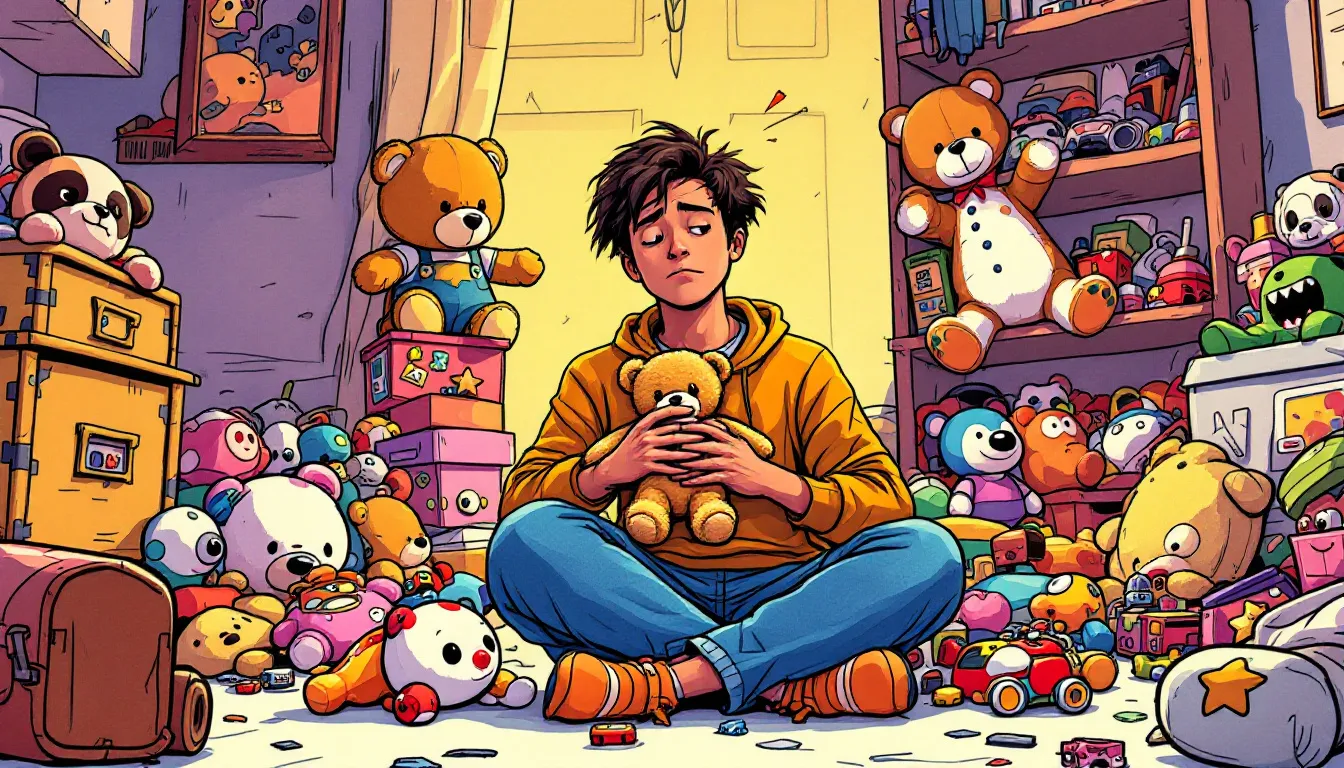
Dealing with emotional attachments can be one of the most challenging aspects of decluttering. Understanding hoarding as a mental health disorder is vital, as it involves complex emotions and irrational beliefs about possessions. Recognizing that hoarding is not merely a choice but a disorder can help foster empathy and understanding from friends and family.
Hoarders often experience significant distress when attempting to toss items, leading to unhealthy living conditions and strained relationships. Acknowledging the emotional connections to items, such as associating them with lost loved ones or cherished memories, is essential. Imagine your life with fewer possessions and how that might feel—visualizing this can help motivate you to start letting go. This understanding can make the process of letting go easier.
Recognizing that memories exist within us rather than in objects can make letting go easier. Many people struggle to release possessions due to these emotional connections. You may have watched yourself or others go through this process and noticed the emotional impact it can have. By focusing on the fact that memories and love are not tied to physical items in the mind, you can begin to deal with these attachments and touch move forward.
Enlist Help from Family and Friends

Involving family and friends in the decluttering process provides essential emotional support and makes the task less overwhelming. Having a friend or family member join you offers motivation and makes the process more enjoyable. Involving your husband or spouse can make the process more collaborative and effective, as teamwork often leads to better results. For us, working with loved ones turned a daunting task into a shared experience, fostering a sense of connection and purpose.
Collaborating with someone else makes sorting through sentimental items less overwhelming. Friends and family can help you sort through items, offering a fresh perspective on what to keep or discard. Sometimes, your parents' habits or attitudes toward possessions may have influenced your own approach to clutter, shaping how you handle sentimental or unnecessary items. A buddy can help you find an objective perspective when determining which items are truly necessary or add value to your life.
Being open with loved ones about your decluttering goals encourages them to lend a hand and support. For us, this openness led to conversations that strengthened our relationships and made the decluttering journey a shared mission. We also found that once we gave an item to someone else, it became theirs to use or discard as they wished, which brought a sense of relief and closure.
Professional Assistance
Sometimes, decluttering can be too overwhelming to handle alone. Professional organizers possess specialized training and tools to safely and effectively manage clutter. They can even assist with large spaces, such as a warehouse full of belongings, tackling extensive collections or inventory that may seem unmanageable. Hiring professionals like T.A.C.T. North Atlanta can significantly reduce cleanup time, completing tasks in days rather than weeks or months.
Professional organizers offer emotional support, creating a compassionate environment that respects your feelings about your possessions. Confidentiality and security are significant aspects of professional cleaning services, ensuring that your privacy is maintained throughout the process.
For us, hiring a professional organizer was a game-changer, providing both practical and emotional support.
Establish New Habits
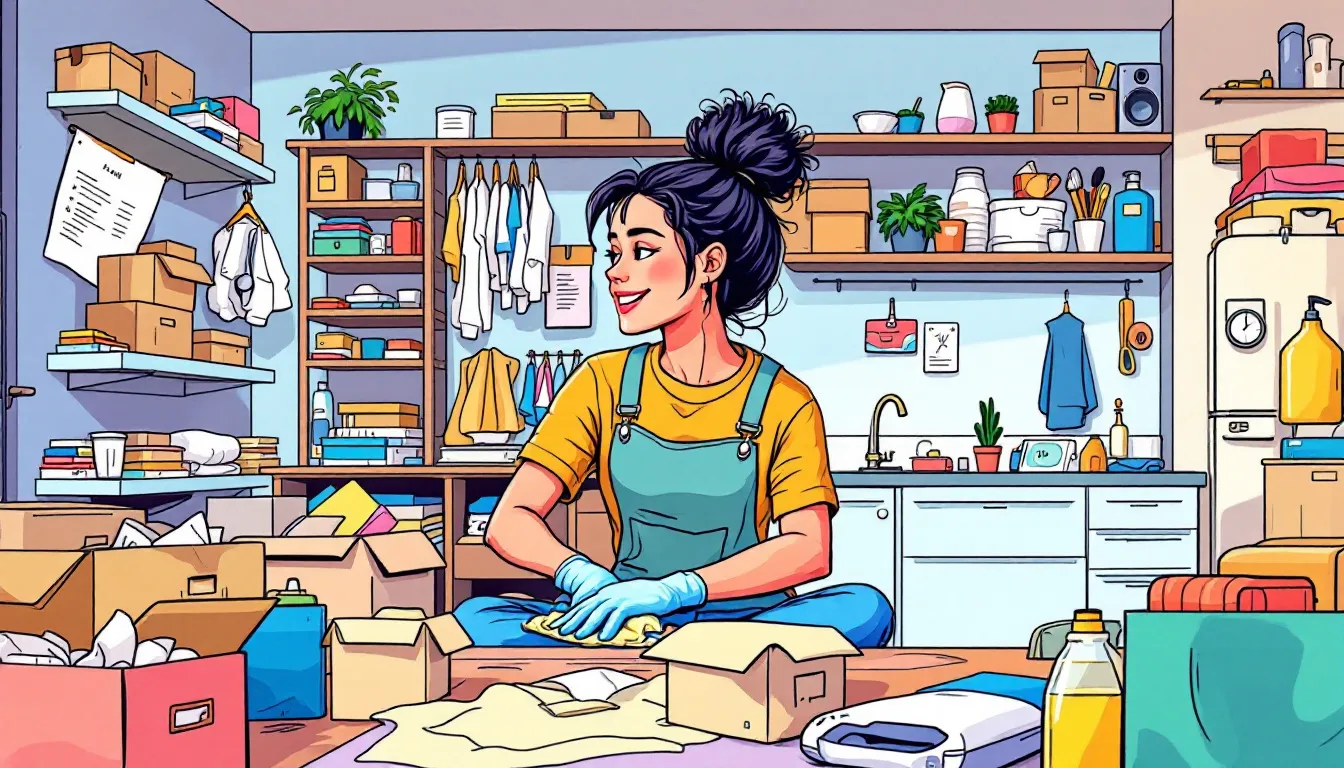
Establishing new habits is crucial to maintaining a clutter-free life. Start with small changes, like creating a nightly routine to clear kitchen surfaces, which helps maintain organization and reduce clutter in high-use areas. Addressing mail immediately upon entering the home prevents it from accumulating and becoming a source of clutter.
Key points for managing small spaces and decluttering:
Consistency in organizing small spaces, like entryways, greatly reduces overall clutter and improves daily routines.
A reminder system plays a significant role in maintaining consistency in daily decluttering efforts.
Shopping without the intent to buy can provide satisfaction without adding clutter.
When receiving gifts, remember:
You have the freedom to decide what to do with them after they are given.
Relocate items to their proper places immediately after sorting to help maintain momentum and avoid distractions.
Have a clear plan for disposing of items, such as scheduling donation pickups, to ensure that decluttered items are effectively removed from the home.
For us, these new habits were key in keeping our human home from returning to a cluttered garage things throw toys live change thing state day.
Set aside time each week to review your progress and make adjustments to your routines as needed.
Celebrate Your Progress
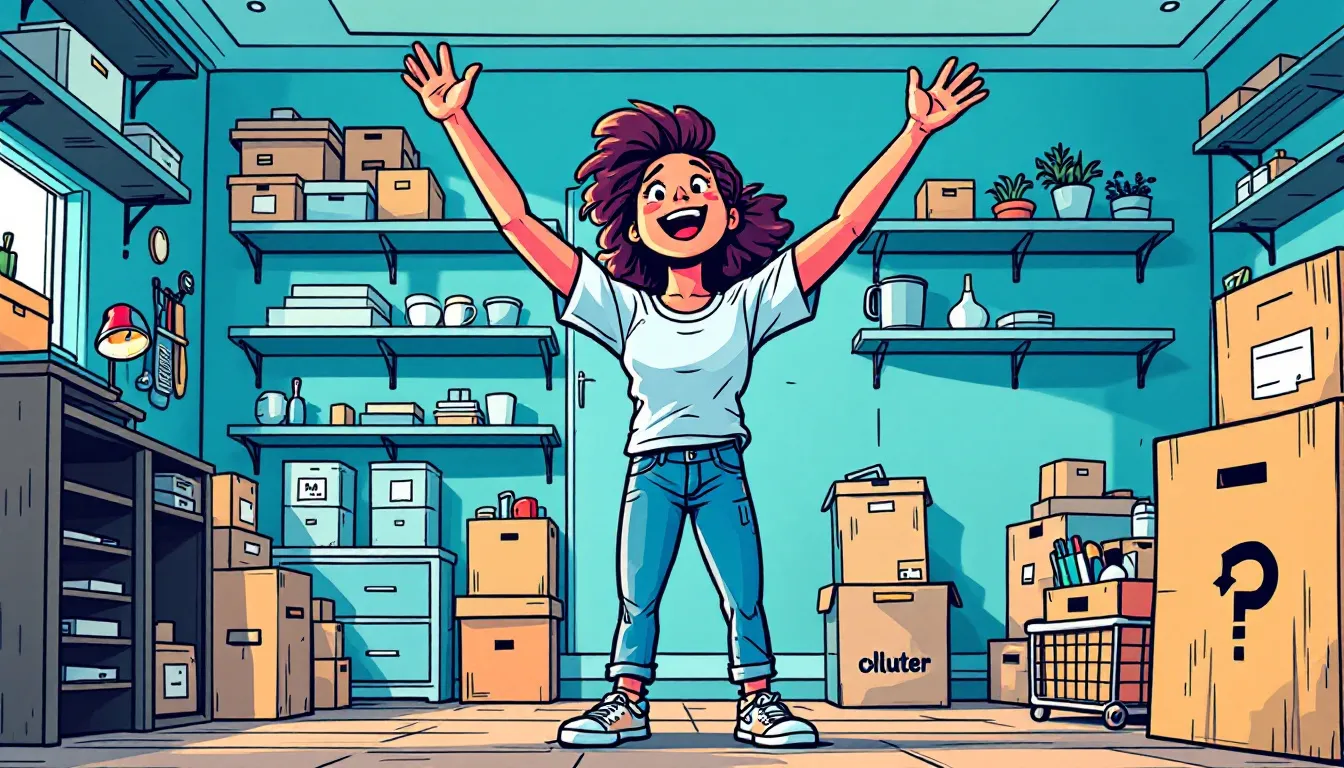
Completing the decluttering of a room provides a strong sense of achievement, motivating you to continue with other spaces. Creating a ‘ta-da!’ list to note completed tasks acknowledges achievements and provides a sense of celebration. Establishing a ritual to celebrate small victories reinforces progress and can be tailored to your personal preferences.
Letting go of possessions can be a freeing experience, reducing emotional burdens associated with hoarding. Reflecting on your accomplishments during short breaks reinforces positive feelings and motivation. Sharing your successes with supportive friends or family enhances the celebration and encourages continued progress.
Feeling proud of your achievements fuels excitement and contributes to ongoing motivation.
Summary
In summary, the journey to declutter your life begins with acknowledging the problem and understanding your emotional triggers. Starting small and working one room at a time can help you build momentum and avoid feeling overwhelmed. Creating a sorting system and setting realistic goals ensure that you maintain progress without getting discouraged.
Dealing with emotional attachments and enlisting help from family and friends can provide the support you need. If necessary, professional assistance is available to help you through the process. Establishing new habits is crucial to maintaining a clutter-free life, and celebrating your progress keeps you motivated. Take the first step today and transform your home into a space that brings you peace and joy.
Frequently Asked Questions
What is the first step in addressing hoarding behavior?
The first step in addressing hoarding behavior is to acknowledge the issue and identify the emotional triggers that contribute to it. This awareness is crucial for effective intervention and support.
How can I avoid feeling overwhelmed when starting to declutter?
To avoid feeling overwhelmed when starting to declutter, focus on one room at a time, ideally beginning with the easiest space to build momentum and confidence. This approach will make the task feel more manageable and less daunting.
What is the 3-box method?
The 3-box method is an effective organizational strategy where you categorize items into 'Keep,' 'Donate or Sell,' and 'Trash,' streamlining your sorting and decision-making process. This straightforward approach can help you declutter efficiently.
How can I deal with emotional attachments to items?
Acknowledge that your memories are internal, not tied to physical objects. Focus on understanding the emotions driving your attachment to better manage it.
Should I consider hiring a professional organizer?
Hiring a professional organizer can be beneficial as they possess the expertise to efficiently manage clutter and offer emotional support throughout the process. Their specialized training and tools can significantly enhance your organizational efforts.
Latest news
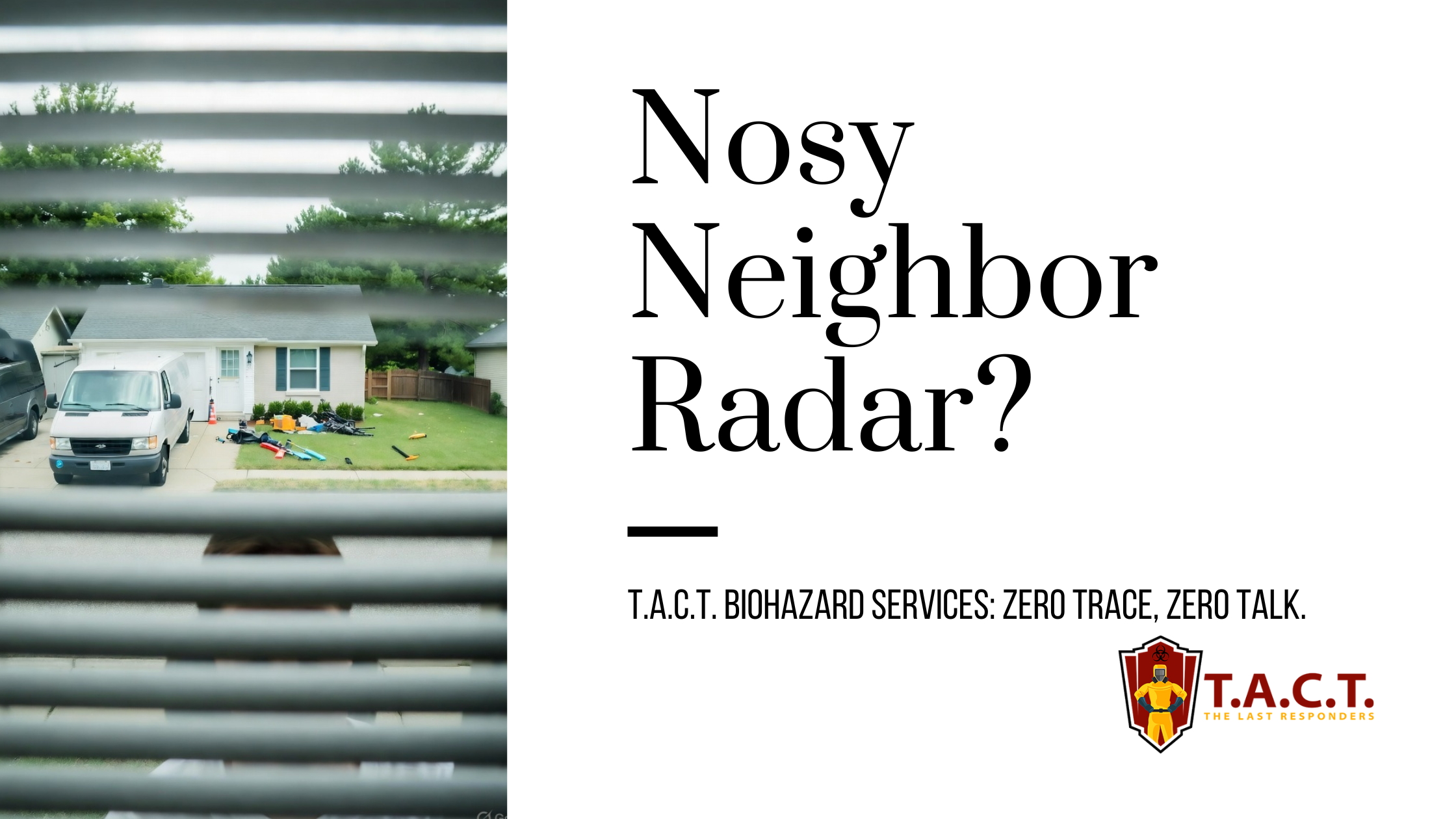
Nosy neighbors peeking? T.A.C.T. North Atlanta offers discreet biohazard remediation for rodent infestations, mold, hoarding, and more. Unmarked vehicles, quiet experts, full privacy—24/7 service at 470-781-4775.
Read More

